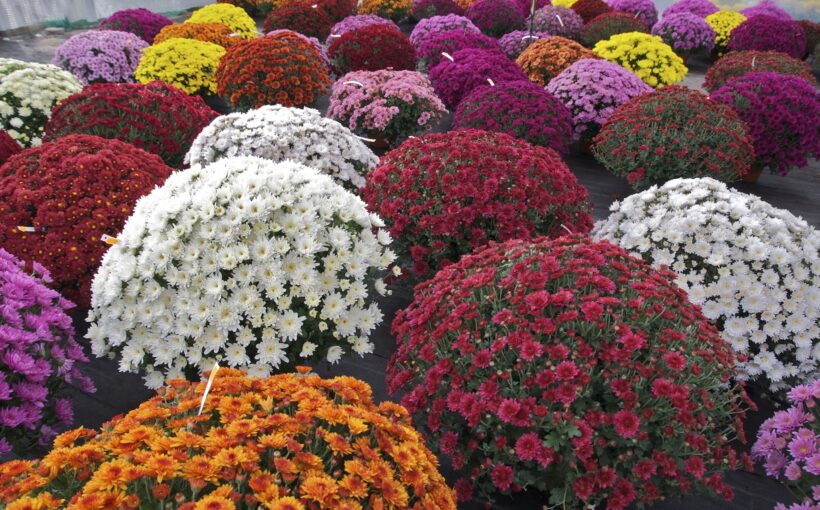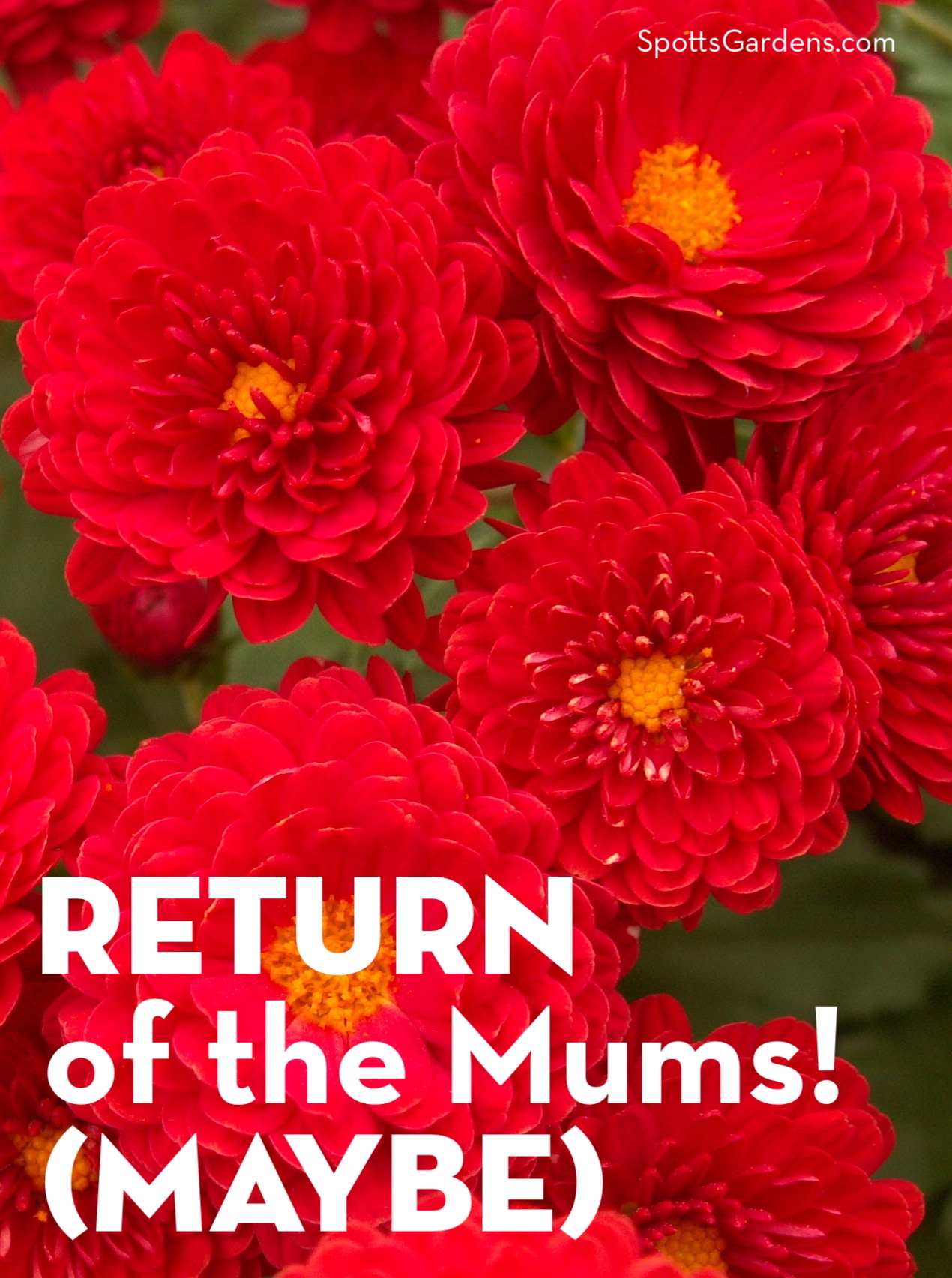Every fall, magazines show picture-perfect scenes of lush fall mums perking up front porches. And every year, people ask us whether they can plant mums in the garden as a perennial. Our answer is—maybe.
Mums fall into two main camps: florist mums and garden mums. Florist mums are the compact, potted superstars you see at nurseries and generally do not return each year. Garden mums grow in a looser habit and reliably return year after year.
Both types are part of the same species, Chrysanthemum morifolium. Whether a mum will return each year depends mostly on whether it has stolons, which are runners near the surface of the ground that put out new roots and shoots. Garden mums have stolons and are perennial. Florist mums have few or no stolons and generally will not survive the winter.
Mums have different flower forms (including daisy-like singles, pompoms, and more), so shop around to find your favorite.
The botanical name comes from the Greek “chrythos” meaning gold and “anthos” meaning flower, but mums are available in a wide range of colors. The traditional “fall” colors of cream, yellow, orange, bronze, and red are ideal for echoing the turning leaves. If you prefer cooler coolers, you can find them in roses, lavenders, and purples as well.
Florist Mums
Florist mums are grown in greenhouses specifically for the florist trade. Their pampered upbringing means they generally can’t handle temperatures below about 60 degrees. When purchasing one, look for one with many buds and just a few flowers in full bloom. Many are bred for up to six weeks of bloom, but a specimen that’s in full bloom is likely to stop blooming after a few weeks.
You can try planting florist mums in the ground about six weeks before a hard freeze. If you’ve stumbled onto one with stolons, it may come back for you. But don’t count on it.
Garden Mums
Garden mums, on the other hand, are a reliable show of late summer and fall color year after year. Plant them in full sun and well-drained soil.
Ideally, garden mums should be planted in spring, but you can also divide and plant in fall. Just be sure to get your plants in the ground by early October to give them time to develop roots before the ground freezes. Choose cultivars hardy to at least zone 6.
To keep garden mums compact, pinch them back during spring and early summer. Use your fingers to remove the growing tip and first set of leaves every two or three weeks until early June, then let them grow.
When your garden mums have finished their first wave of bloom, try pinching the dead blooms off with your fingers. You should find a second layer of buds that will begin blooming once it is exposed to the light.

